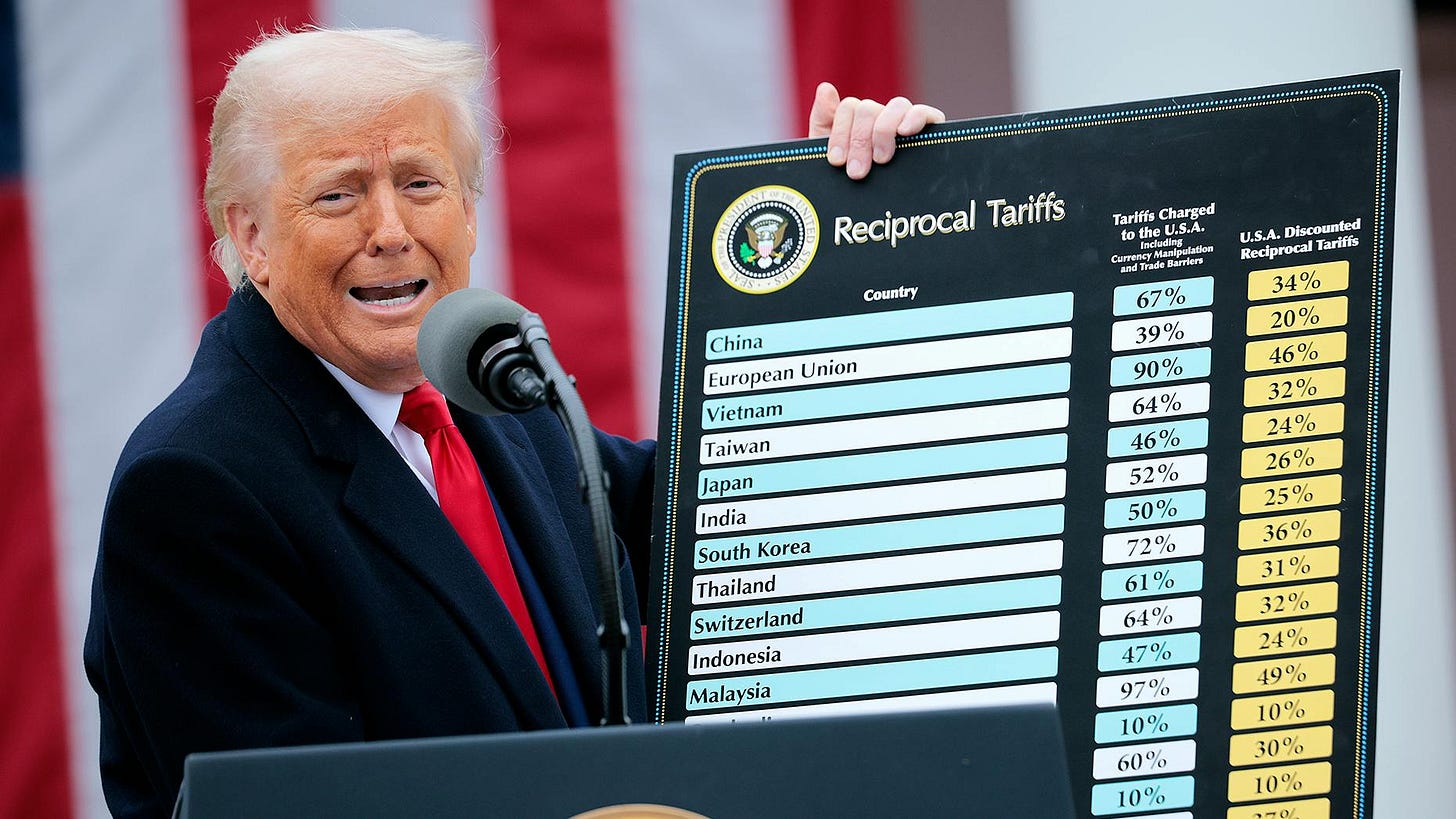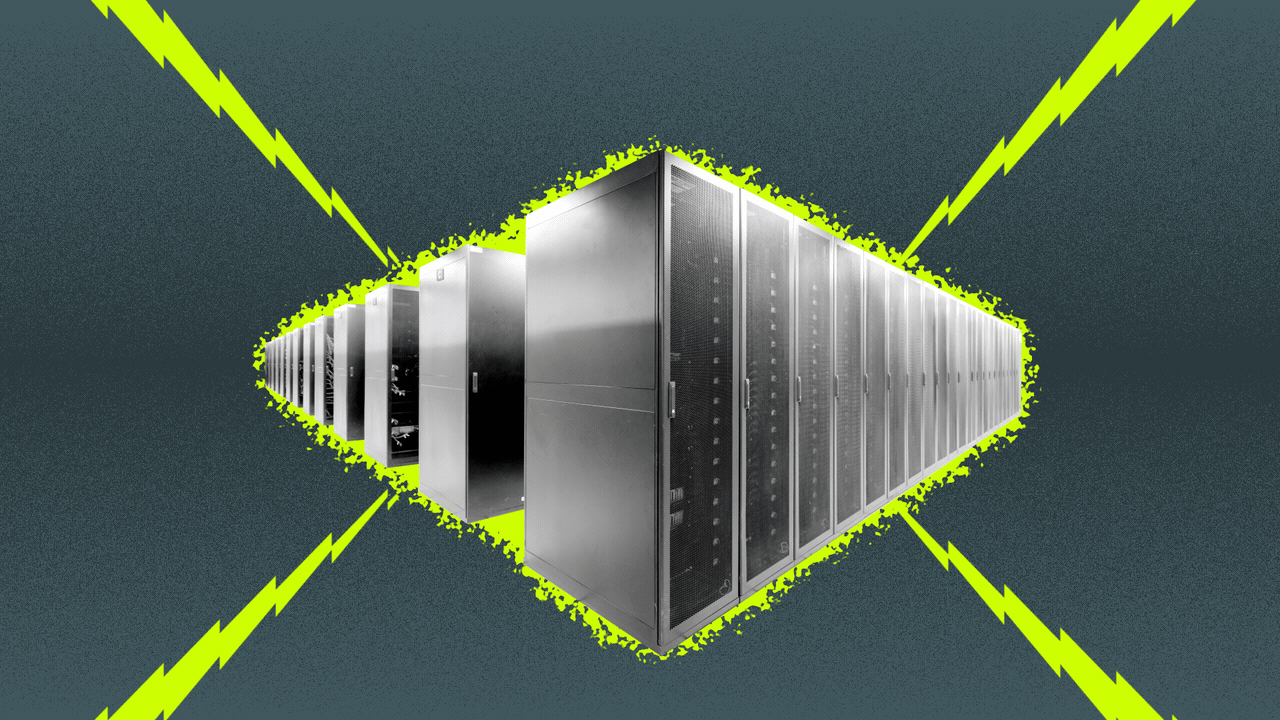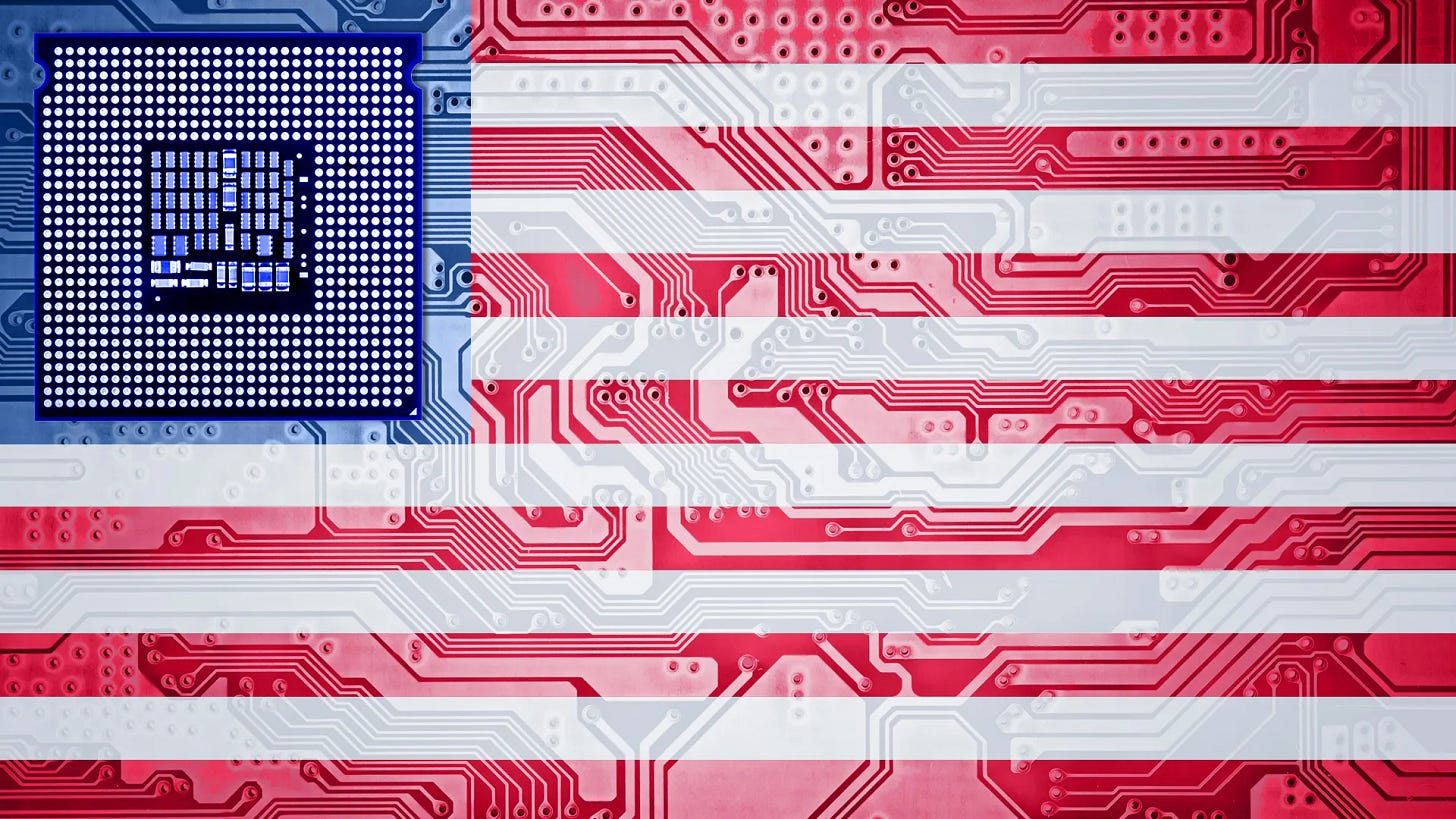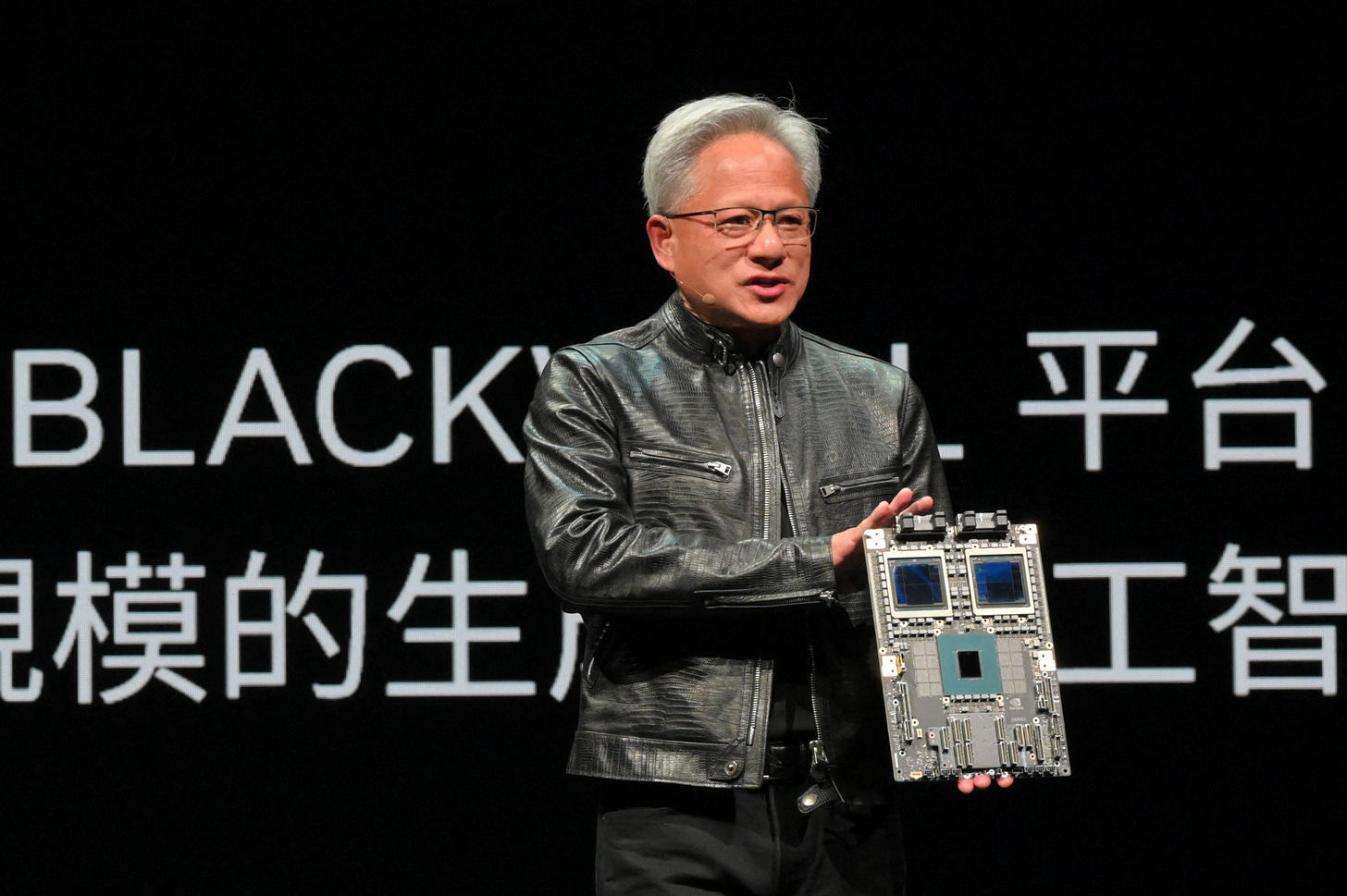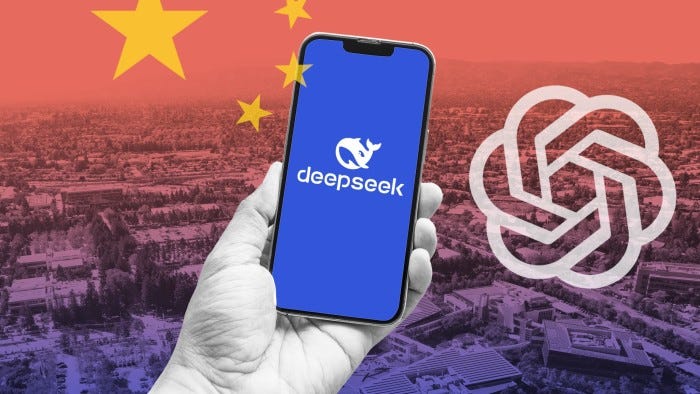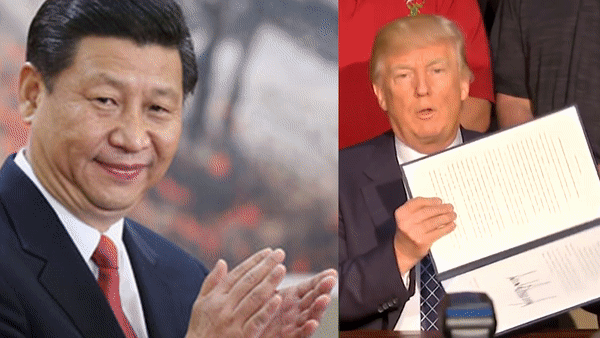
AI: A Tale of Two AI Races, US vs China. RTZ #888
As the US and China try and hammer out a broad trade agreement in southeast Asia this week, it’s important to take stock of its impact on AI competition in the so called ‘AI Race’.
The AI policy and Infrastructure ‘race’ between the US and China is accelerating. US companies are rallying for more regulatory support in DC, while Chinese AI companies are just rallying to create more energy (especially Nuclear) and compute efficient AND open source AI Infrastructure that can whittle down US closed source LLM AI leadership by OpenAI, Anthropic and others. Several data sources this week to illustrate this narrative.
I’ve written extensively about how working with Washington DC is a critical element of the Mag 7/MANGO companies accelerating their AI Agendas in this AI Tech Wave. Despite the US’s self-inflicted, unilateral Tariff and Geopolitical Trade headwinds.
At scale unprecedented in prior tech waves. From geopolitically charged supply chains to tariff chess games, the founders and CEOs of today’s AI companies have had to spend almost as much time in DC as in Silicon Valley.
This week sees this in spades with both OpenAI and Nvidia charging ahead with separate DC initiatives. The former’s founder/CEO Sam Altman has been driving a multi-trillion dollar infrastructure agenda, while the latter’s founder/CEO Jensen Huang continues to balance US vs China geopolitical tech realities.
OpenAI which has been on a blistering execution pace of late, is now outlining their ‘wishlist’ for AI policy from the current administration, especially against the wide swathe of AI regulations emerging at the State level across the country.
Axios outlines this well in “OpenAI sees chance to reindustrialize U.S.”:
“Investing in AI infrastructure will result in significant GDP growth in the next few years, OpenAI predicts in a new regulatory filing shared first with Axios.”
“The big picture: OpenAI’s big idea is that this isn’t just about AI — it’s America’s shot at reindustrialization.”
“In OpenAI’s view, the race to secure computing power, modernize the grid and rebuild supply chains should supercharge U.S. manufacturing and energy production.”
“Driving the news: President Trump’s AI action plan called for companies to tell the government what regulations stand in the way of AI’s development. Comments are due Monday.”
“A new OpenAI internal analysis finds that the first $1 trillion invested in AI infrastructure could add more than 5% to GDP growth over a 3-year period.”
“The company says the next five years will bring an immense need for electricians, mechanics and other construction trade workers — an estimated 20% of those existing workforces for OpenAI’s purposes alone.”
This again highlights the extraordinary impact AI Infrastructure spend is already having on the broader US Economy.
It’s quite the AI wish list:
“What’s inside: The Office of Science and Technology Policy should prioritize “closing the ‘electron gap’” between the U.S. and China by “setting an ambitious national target of building 100 GW a year of new energy capacity,” OpenAI chief global affairs officer Chris Lehane wrote in the filing.”
“The company also calls for the government to expand tax credits to AI-related sectors, and use AI to speed up federal permitting and environmental reviews.”
“When “responsible” AI companies are conducting child safety red-teaming and safety evaluations, the Justice Department should provide them with immunity, Lehane wrote.”
“The government should encourage more companies to partner with the Center for AI Standards and Innovation, “including by working with Congress to provide participating companies with liability protections such as preemption of state laws and regulations,” per the filing.”
“Between the lines: If 2025 was about knocking down momentum toward federal AI regulations, 2026 is about getting the U.S. to help AI companies build the structure needed to carry out their ambitious agendas.”
The initiatives of course addresses the energy/power imperatives for AI:
“What they’re saying: Lehane says OpenAI wants to do its part in reaching that energy goal through its Stargate sites.”
“In 2026 and beyond, we’ll build on that progress by strengthening the broader domestic supply chain — working with US suppliers and manufacturers to invest in the country’s onshore production of critical components for these data centers,” Lehane wrote.”
“We will also develop additional strategic partnerships and investments in American manufacturing to specifically advance our work in AI robotics and devices.”
“Yes, but: The boom in AI infrastructure could be taking away energy and capital from other efforts to boost U.S. manufacturing. Spending on construction for new factories is down 2.5% this year so far but for data centers, it’s up almost 18%, Bloomberg reports.”
“The bottom line: OpenAI is casting AI infrastructure as the new industrial policy.”
Pretty comprehensive AI wishlist, with ambitious asks. And likely to be echoed by its peers.
Nvidia is also in DC with founder/CEO Jensen Huang in person.
Axios outlines that separately in “Nvidia’s D.C. moment”:
“Nvidia founder and CEO Jensen Huang is bringing Silicon Valley to D.C. this week with the company’s first-ever developers conference in the nation’s capital, signaling how central Washington has become to the chip giant’s ambitions.”
“Why it matters: The annual Nvidia GTC (GPU Technology Conference) in San Jose is known as the “Super Bowl of AI.” The new Washington edition showcases Nvidia’s deepening ties with the federal government.”
“Driving the news: Axios got a sneak peek at themes of Huang’s keynote tomorrow. “AI is the most transformative technology in human history — and the race is on,” Huang says.”
“GTC D.C. brings together researchers, developers, business leaders and policymakers in the heart of our nation’s capital to explore breakthroughs in AI, robotics, life sciences, energy, quantum, and 6G — advancing innovations vital to America’s technological leadership.”
The whole piece is worth reading for the nuance on the policy objectives.
These and other US initiatives should be weighed against China’s aggressive top down and bottom up focus on executing an accelerated program of AI Chip and Power program for AI Data Centers at a pace that matches recent US Tech Trade Curbs, and advances China’s power buildout especially on the Nuclear front.
As this must read Economist article outlines in “China’s chipmakers are cleverly innovating around America’s limits”:
“They are pushing tools to the edge, scaling up and relying on fuzzy maths”.
“THE MICROCHIP wars have been running since 2018. That was when America under Donald Trump (and later Joe Biden and Mr Trump again) began imposing increasingly onerous export restrictions on semiconductor firms hoping to sell their wares in China. This high-tech embargo was intended to frustrate China’s ambitions to build an advanced chipmaking industry of its own.”
“Instead, it has spurred them. China’s government is hoping that its firms can do with hardware what they have already done with software, and innovate around America’s limits. In January DeepSeek, a Chinese software firm, surprised the world by releasing an artificial-intelligence (AI) model that was competitive with Western rivals despite having been trained using a fraction of the computing power. China’s chipmakers are trying to perform a similar trick. They are stretching tools to their limits, building big clusters of processors to offset slower chips and fusing hardware and software to wring out every drop of performance. The question is whether China can connect these components—chips, systems and code—into a self-sufficient, competitive AI “technology stack”.
This while its top tech companies like Alibaba made meaningful strides in increasing the power efficiencies on its AI chip infrastructure by over 80%. And DeepSeek continued to drive new innovations in its open source models. Doing more with less again.
All this while China’s government is top down and bottom up pushing a nuclear power agenda that surpasses anything comprable in the US and the world. This NYTimes piece “How China Race Ahead of the US on Nuclear Power”, is especially is worth reading in full on that front. Since 2013, the US has managed to build two plants with cost over-runs in the billions, while China built ‘13 similar reactors, with 33 more underway’. The fuller context:
“China is quickly becoming the global leader in nuclear power, with nearly as many reactors under construction as the rest of the world combined. While its dominance of solar panels and electric vehicles is well known, China is also building nuclear plants at an extraordinary pace. By 2030, China’s nuclear capacity is set to surpass that of the United States, the first country to split atoms to make electricity.”
“Many of China’s reactors are derived from American and French designs, yet China has overcome the construction delays and cost overruns that have bogged down Western efforts to expand nuclear power.”
“At the same time, China is pushing the envelope, making breakthroughs in next-generation nuclear technologies that have eluded the West. The country is also investing heavily in fusion, a potentially limitless source of clean power if anyone can figure out how to tame it.”
“Beijing’s ultimate objective is to become a supplier of nuclear power to the world, joining the rare few nations — including the United States, Russia, France and South Korea — that can design and export some of the most sophisticated machines ever invented.”
And US companies especially the ones USING AI are noticing. Note how AirBnB founder/CEO Brian Chesky who is a close friend and advisor to OpenAI’s Sam Altman highlighted how his company is using Alibaba’s Qwen open source models in its AI initiatives.
All this is to highlight the fiercely competitive global market for AI both in terms of the technologies, and the underlying policies that drive it all to scale.
This AI Tech Wave is very different indeed from the tech waves we’ve seen before. Stay tuned.
(NOTE: The discussions here are for information purposes only, and not meant as investment advice at any time. Thanks for joining us here)


